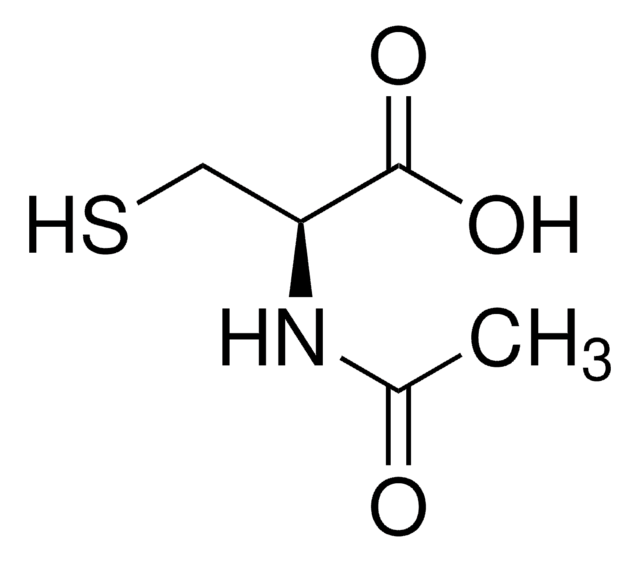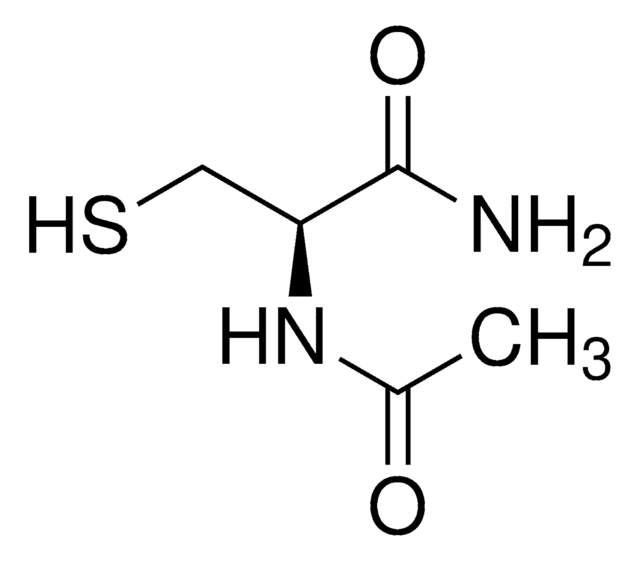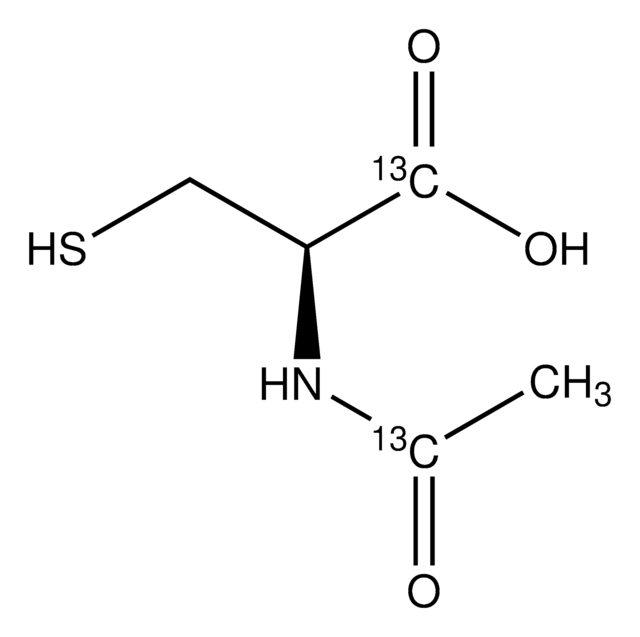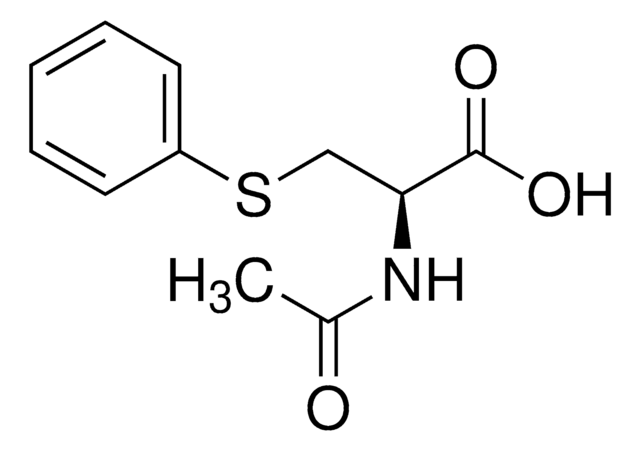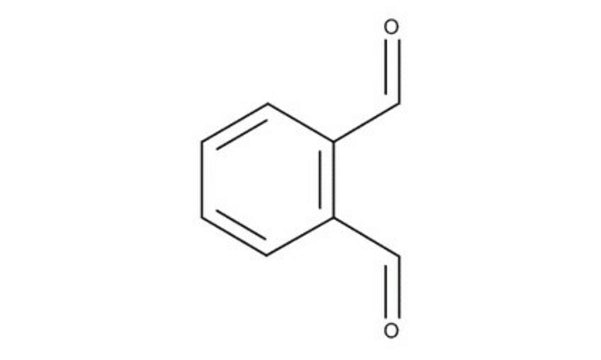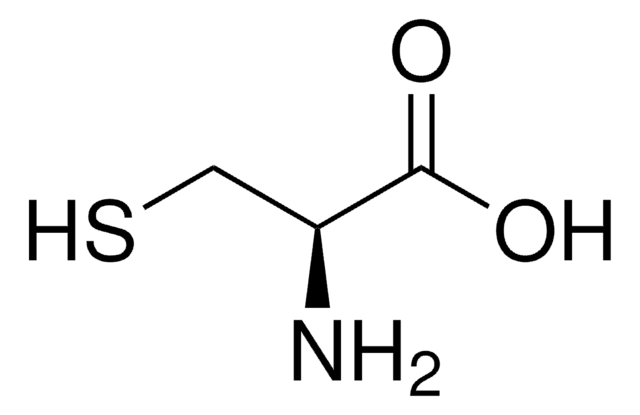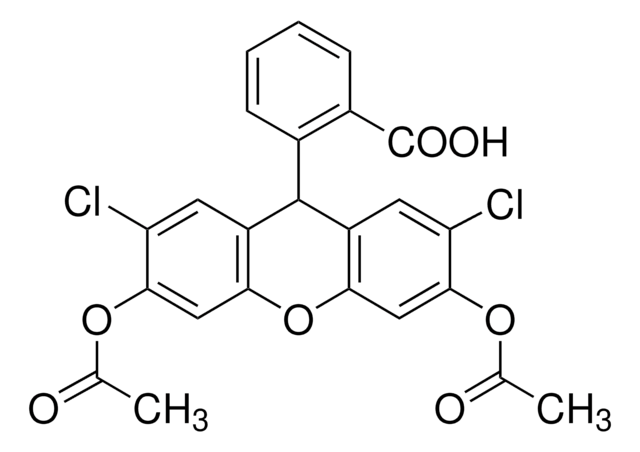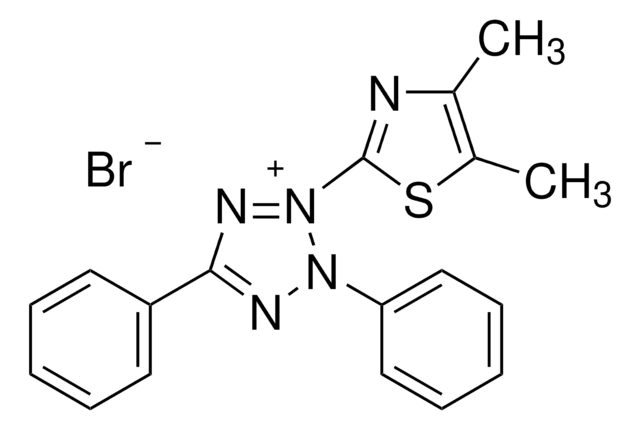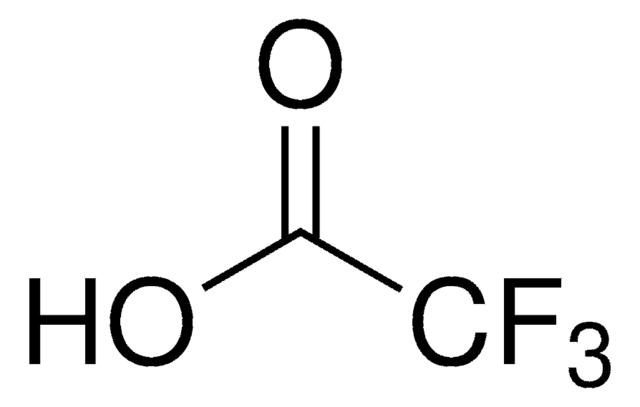1.12422
N-Acetyl-L-cysteine
for biochemistry
Synonym(s):
N-Acetyl-L-cysteine, 2-Acetamido-3-mercaptopropionic acid
About This Item
Recommended Products
vapor pressure
<1 hPa ( 20 °C)
Quality Level
form
solid
potency
5050 mg/kg LD50, oral (Rat)
pH
1.5-2.5 (20 °C, 100 g/L in H2O)
mp
110.4 °C
solubility
179.5 g/L
density
1.48 g/cm3 at 20 °C
bulk density
730 kg/m3
storage temp.
2-30°C
InChI
1S/C5H9NO3S/c1-3(7)6-4(2-10)5(8)9/h4,10H,2H2,1H3,(H,6,7)(H,8,9)
InChI key
PWKSKIMOESPYIA-UHFFFAOYSA-N
Related Categories
Application
- Development and characterization of a spray-dried inhalable ternary combination for the treatment of Pseudomonas aeruginosa biofilm infection in cystic fibrosis: This study presents a novel N-Acetyl-L-cysteine application in aerosol form designed to treat Pseudomonas aeruginosa biofilm infections in cystic fibrosis patients, highlighting its potential to improve pulmonary function and reduce bacterial colonization (Alhajj et al., 2024).
- Emetine induces oxidative stress, cell differentiation and NF-κB inhibition, suppressing AML stem/progenitor cells: Research indicates that N-Acetyl-L-cysteine, as part of a combinatory therapy, enhances the oxidative stress response in acute myeloid leukemia, providing a therapeutic strategy for targeting leukemia stem cells (Silva et al., 2024).
- N-acetylcysteine Treatment in Chronic Obstructive Pulmonary Disease (COPD) and Chronic Bronchitis/Pre-COPD: Distinct Meta-analyses: This meta-analysis reveals N-Acetyl-L-cysteine′s effectiveness in reducing exacerbations and improving antioxidant defense in COPD and chronic bronchitis, suggesting a significant therapeutic benefit in respiratory disease management (Papi et al., 2024).
- Tannic acid- and N-acetylcysteine-chitosan-modified magnetic nanoparticles reduce hepatic oxidative stress in prediabetic rats: N-Acetyl-L-cysteine, used in modifying magnetic nanoparticles, shows promising results in reducing oxidative stress and liver damage in a prediabetic rat model, underscoring its potential in preventive therapies (Świętek et al., 2024).
- Phenylarsine oxide induced corneal injury involves oxidative stress mediated unfolded protein response and ferroptotic cell death: Amelioration by NAC: This research outlines N-Acetyl-L-cysteine′s role in mitigating oxidative stress and ferroptosis in corneal cells, providing insights into its protective effects against chemical-induced ocular damage (Kandhari et al., 2023).
Analysis Note
Identity (IR-spectrum): passes test
Appearance: white to almost white, crystalline powder or colorless crystals
Appearance of solution (1 mol/l, water): clear and colorless
Spec. rotation (α 20/D, 50 g/l, buffer pH 7.0): +21.0 to +27.0
Heavy metals (as Pb): ≤ 0.001 %
NH₄ (Ammonium): ≤ 0.01 %
L-cysteine (HPLC): ≤ 0.02 %
Other ninhydrine positive substances: ≤ 0.1 %
signalword
Warning
hcodes
Hazard Classifications
Eye Irrit. 2
Storage Class
13 - Non Combustible Solids
wgk_germany
WGK 2
flash_point_f
Not applicable
flash_point_c
Not applicable
Certificates of Analysis (COA)
Search for Certificates of Analysis (COA) by entering the products Lot/Batch Number. Lot and Batch Numbers can be found on a product’s label following the words ‘Lot’ or ‘Batch’.
Already Own This Product?
Find documentation for the products that you have recently purchased in the Document Library.
Customers Also Viewed
Our team of scientists has experience in all areas of research including Life Science, Material Science, Chemical Synthesis, Chromatography, Analytical and many others.
Contact Technical Service